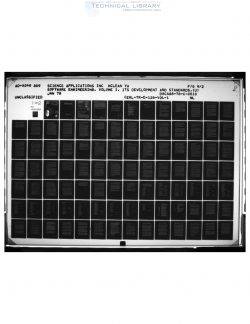CERL-TR-E-126
- Version
- 303 Downloads
- 40.53 MB File Size
- 1 File Count
- March 5, 2017 Create Date
- March 5, 2017 Last Updated
Software Engineering - Vol I; It's Development and Standards

Background Software engineering is a relatively new discipline whose development has been shaped by the increasing demand for its product. Because of the pressures created by this demand, software engineering has evolved very rapidly; however, its development has been subjected to very little of the critical analysis required to indicate where future development and standardization are needed. This study therefore represents a first attempt at drawing together many of the general concepts of software engineering and related information as an initial step in the refinement of the discipline of software engineering. Objective The objectives of this study were (1) to evaluate the maturity of the software development process and its accompanying standards, (2) to project future developments in its evolution, and (3) to identify specific areas re— qui ring standards and the means for achieving that stand— ardization.
Approach This study was conducted as a top—down analysis of the factors which define the development of the software engineering discipline. A cornmon sequence of phases which can be used to classify the functions performed in all engineering disciplines was first defined (Chapter 2) , and the role of standards in the development process of an engineering discipline was studied (Chapter 3). The evo— lution of software engineering and its present status
were then examined in light of the structures developed in the first two steps (Chapter 4) as a basis for evaluating its maturity and projecting probable future directions in software engineering (Chapter 5) . Based on the preceding steps, each software engineering phase was dissected into its unit inputs, and the current avail— ability of those inputs was determined; from this analysis, a list of specific areas requiring standards was developed (Chapter 6) . Chapter 7 outlines the steps required to achieve the recommended standardization, and Chapter 8 summarizes the study conclusions. A list of organizations participating in software engineering standardization and of relevant reference works was developed in performing the above steps. Appendix A lists participating organizations. The bibliography (Appen— dix B) presents a wide variety of works, including standards, discussions of methodology, and subject—oriented articles. Short abstracts are provided to identify the subjects dis— cussed or standardized. Volume 11 of this report provides a list of individuals who are participating in software engineering standardization.
| File | Action |
|---|---|
| CERL-TR-E-126 Software Engineering - Vol I; It's Development and Standards.pdf | Download |

Comment On This Post